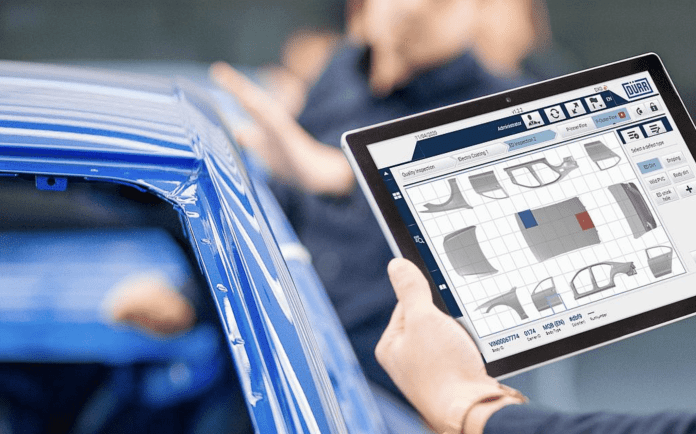Automotive paint-shop supplier Geico Taikisha has signed with the Germany-based ADAMOS consortium of machine makers to use its industrial IoT solution to digitalize the painting process for its customers’ vehicle production plants. The deal has been led on the supplier side by Germany-based data analytics and integration company Software AG, part of the ADAMOS collective.
Geico Taikisha, a $2 billion alliance between Italy-based surface treatment and painting equipment supplier Geico and Japanese multinational conglomerate Taikisha, serves Audi, BMW, Ford, GM, Honda, Hyundai, Mazda, Mercedes, Mitsubishi, Nissan, PSA, and Renault, among other automotive makers. It has operations in 43 locations, including six production plants, in 20 countries.
Geico Taikisha selected the ADAMOS industrial IoT solution, underpinned by Cumulocity IoT platform from Software AG and well documented in these pages, to connect its own production facilities, and run live diagnostics, error correction, and preventive maintenance on equipment. It is offering the same to customers using its paint-shop robots and other industrial equipment.
A statement said the ADAMOS solution will help it to achieve new production goals with its “combination of edge analytics with cloud management”. The ADAMOS (ADAptive Manufacturing Open Solutions) collective was founded by Software AG and German industrial machine makers Dürr, DMG MORI, and Zeiss to develop high-end process analytics for industrial machines.
Dürr, which makes the robots, reworked its DXQ equipment analytics programme with Software AG for the ADAMOS software to record, analyse, and eliminate faults in the painting process. Writing 18 months ago, the software had been rolled-out to 10 factories belonging to a certain premium car marque. Software AG said at the time the software will be rolled out generally in the German car market in due course.
The solution is considered an elegant example of production-line pyrotechnics, which replaces manual on-the-hoof inspections with automated real-time cut-offs as soon as spray jobs go awry. Software AG reckons two million kilobytes of data are “coming off these robots” per day, and the ADAMOS solution evaluates 230 different signals from each, at any one time – “out of 100,000 data points we are collecting.”
Two-hundred and thirty data points are sufficient to correlate live errors in the process. The rest are weeded out in the ‘co-creation’ phase, with the ADAMOS trinity of software provider, hardware maker, and factory operator banging their heads together to finesse the analytics. Where manufacturers typically run manual checks on every tenth paint job, and reset and respray vehicles in the line after errors are discovered, the ADAMOS system stops the line at once, showing the painting error and flagging-up the fault in the machine.
The trickery comes in the algorithmic shuffle of three treatments of machine data, in streaming analytics, time-series analytics, and batch analytics. These are pooled in an edge-based version of the Cumulocity IoT platform (also white-labelled by a number of major mobile operators). The streaming analytics, based on Software AG’s Apama product, embeds the rules (iterated through co-creation), analyses the data, and issues the ‘alarms’.
The time-series engine, based on its TrendMiner product, trawls historical data as it is stored, to reveal the errors in the painting – “what happened when the job went out of sync; the patterns and the fingerprints”. These are rendered in a visual dashboard, for factory-line operators to take appropriate action, and re-spin the cycle. The batch analytics, organises the traditional ‘big data’ rules, as provided by any number of business intelligence (BI) programmes.
Software AG’s innovation has been to create a ‘data hub’ interface that exposes the data, in this case from the auto-plant paint shop, in third-party BI engines such as Tableau and Microsoft Power BI. Daryush Arabnia, chief executive and president at Geico Taikisha, said: “This is the only way we can perform in line with the standards required by every manufacturer who wants to offer customization to the mass market.”
Giuliano Ballarini, head of Software AG in Italy, said: “Cumulocity IoT is a key part of Industry 4.0 initiatives and this is just the beginning of our collaboration with Geico Taikisha. The company is recognized as an innovator that sets the benchmark in its market, we are confident that this partnership will benefit both our companies and we look forward to growing together.”

